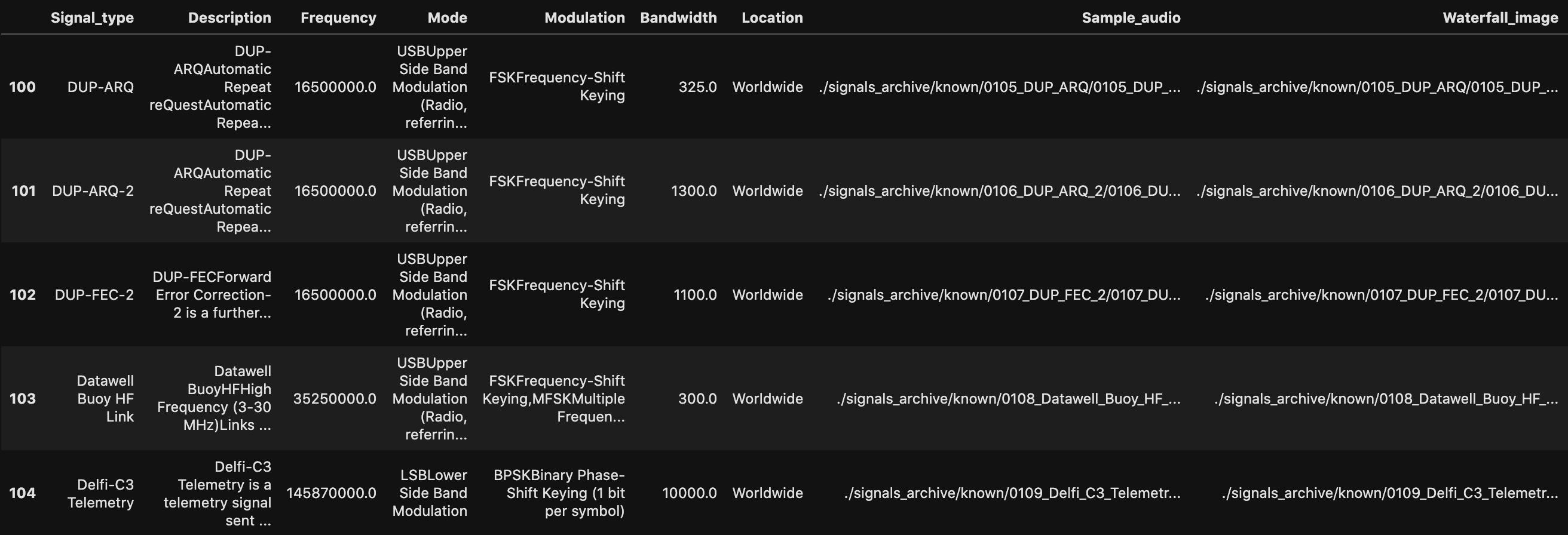About the dataset
The Signal Identification Guide (SIGID) wiki is an organized database of information on radio signals. The SIGID wiki website is a collection of all the information about radio signals that is held among a community of radio amateurs and enthusiasts. Any radio signal that can be received and recorded can be included in the database, either as a sample of an already described radio signal or as an unknown signal yet to be identified.
Each signal is characterized by signal type, frequency, bandwidth, modulation type, location, sample audio, spectrogram and a short description. They were received and recorded using software defined radio , and most of the audio samples have been demodulated from IQ energy information to audio. At the time of this writing (February 2021), there are 422 known or identified and 319 non-identified signal pages on the website. The archival strategy is contingent on community interest in listening and describing different radio signal applications, such as military, commercial, marine or satellite reception, trunked signals and amateur radio. Known signals are divided up in categories based on these applications, but also based on certain signal properties such as whether they are analogue or digital in terms of information transfer, or which frequency band they occupy (very low, low, middle, hight).
We downloaded the known dataset using the Artemis software which creates an offline signal database. We then crawled the SIGID wiki website for to gather the data on unknown signals in the same structure and format. We normalized the data by cutting the audio samples into short chunks of the same duration (1s and 5s). We created new spectrograms for all sounds using an ffmpeg software filter and linked these to the sounds in the database, to display in the two data observatories.
We worked together with the website administrator to obtain samples of the unknown signals and understand the archival strategy, process of identification and test the outputs of our work. We are very grateful for his support.

